 Written by Benjamin K. Mattox, DrPH, PA-C
Written by Benjamin K. Mattox, DrPH, PA-C
“How long will it take for me to recover?”
“Will I make a full recovery?”
If you or your loved one has suffered a stroke, once the initial shock has subsided you’ll want answers to these big questions. While your physician is going to be your best personal source for a recovery plan, our experts have created this handbook to help support the stroke rehab portion of your recovery. In addition, we also offer many more stroke recovery guides, and we highly encourage you to use them as a resource (and bookmark them for later!).
Below, we break down the most common types of stroke rehab and suggestions for therapy and mobility devices to help you recover and adapt to mobility limitations during recovery.
Although everyone who suffers a stroke will be affected in a variety of ways and will require specialized treatment plans customized to their specific needs, there are some wonderful supportive rehab products to help speed the stroke recovery process while they also mitigate pain, improve circulation, optimize mobility, and help stroke patients to regain the fullest function possible. Often used in hospitals and rehabilitation facilities, much of this specialized equipment can also be used at home to keep the therapy going for the best patient outcomes.
One company making big waves in stroke recovery is Saebo. Their SaeboGlove for Stroke Patients is a clever device that makes hand therapy widely accessible through its minimalist design. The entire device is made of a wrist splint, glove liner, tensioners, and finger hooks, all of which support the natural motions of the hand and strengthen its muscles. This rehab glove can be used to retrain your hand to perform daily tasks such as picking up the remote control or opening the oven door, a huge boon when recovering from stroke or other injuries, and all of this can be done easily from the comfort of your home.
Another popular Saebo Product is the SaeboStim Micro E Stim Machine, a compact and comfortable garment worn on the upper arm that provides convenient, localized electro-stim therapy to the user’s muscles. This serves to re-educate and strengthen them so you can get back to using them normally once again. The compact design of the garment makes it easy to store and take with you on the go, and the nylon glove and sleeve are comfortable and soft on the skin.
Finding effective products without sacrificing convenience and comfort is no small task. Fortunately, Neofect has created a product that puts these values first: the NeoMano Soft Robotic Hand. This device is a soft partial glove that slides over the index and middle fingers and the thumb, allowing for sensory input in the ring and pinky fingers and across the palm. This creative design bolsters the ability of the wearer to maintain their grip to perform daily tasks, while still granting them a substantial amount of tactile interaction with the world around them. The NeoMano can help people recovering from stroke and other injuries regain strength in their hands and independence in their lives from the comfort of their homes.
Massage can help people recover from a stroke in a variety of ways, assisting in reducing swelling, removing toxins, and encouraging circulation and lymphatic flow. The Jeanie Rub Deep Massager for Massage Therapy by Core Products is perfect for both professional and home use, as it’s easy to control for both the practitioner and the patient. Providing deep, intensive massage and relaxing therapy that alleviates tight, spasming muscles, this popular, top-of-the-line massager can also help stroke patients sleep better, as insomnia is often a common challenge following a stroke. For home use, our absolute favorite is the Mini+ Handheld Massager by Power Plate. Don't let the small size fool you, it packs a lot of punch!
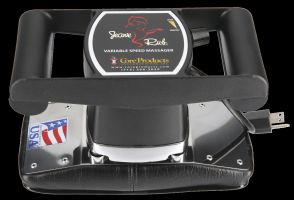
Jeanie Rub Deep Massager for Massage Therapy by Core Products
View Product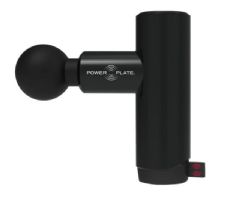
Power Plate Mini+ Handheld Massager
View Product
As the most commonly observed lower-limb deformity following a stroke, spastic equinovarus foot is caused by spasticity. The positioning of the ankle-foot complex requires correction and control with the use of an ankle-foot orthosis (AFO). Also used for another common post-stroke condition, foot drop, AFOs come in a wide variety of configurations to support the specialized needs of each patient. Often preferred by medical professionals and their stroke patients alike, the Push Natural Gait Ankle Foot Orthosis by Bracelab mimics a natural walking gait by raising the foot during the swing phase and stabilizing the ankle in the stance phase. Controlling inversion and eversion by providing support on both sides of the ankle, this unique AFO is a great choice for stroke patients not happy with their existing plastic or carbon fiber AFO.
With a discreet and comfortable design, the SaeboStep AFO Brace is a favorite among those recovering from an orthopedic injury, stroke, or foot drop. Unlike most rigid and unforgivingly painful braces, the SaeboStep is uniquely designed to wrap around the ankle and attach to the eyelets of your shoes for tension support. Through easy-to-use dials, patients can adjust the tension to keep the foot as loose or as secure as needed, optimizing foot clearance and support when walking. The SaeboStep drastically improves coordination, confidence, and comfort!
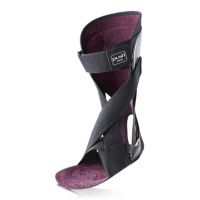
Push Natural Gait Ankle Foot Orthosis (AFO)
View Product
To better regain upper extremity function following a stroke, the SaeboGlide is uniquely designed to assist people in rehabilitating and enhancing the strength and range of motion of their arms and hands. Utilized by rehab professionals to use with their patients in the clinic, the SaeboGlide is also a popular and engaging rehab tool to use at home. The gliding sleeve exercises the affected extremity in all planes of movement, including gravity-assisted, no gravity, and gravity-resistant, and can be used by patients with little to no hand function.
Built off the concept of zero gravity, the SaeboMAS Mobile Arm Support provides a weightless feel to a patient’s arm and shoulder, allowing them to effortlessly execute a variety of motor tasks. With repetition, patients gain confidence in being able to eat and drink on their own and accomplishing other daily activities such as cooking, cleaning, and folding laundry. What otherwise would’ve been impossible, the SaeboMAS also allows patients to partake in different occupational treatments for strength and recovery. Whether it’s at home or in a clinic, this mobile arm system can help stroke recovery patients relearn normal movement patterns for a great sense of independence and assurance.
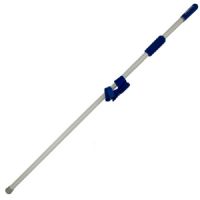
SaeboGlide Plus Shoulder Rehab Device for Stroke Recovery
View Product
As individuals recovering from a stroke work toward optimizing coordination and balance while walking, they also require some ambulation support. Specially designed for users with mobility limits as they progress through stroke rehab, the Meywalk 2000 Gait Trainer promotes a more upright posture and trunk extension for a healthy, correct gait. It can be used for both indoor and outdoor support and includes a convenient seat for resting.
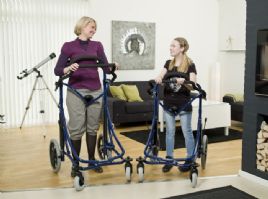
Meywalk 2000 Gait Trainer - Pediatric and Adult Sizes
View Product
TENS units and other electrotherapy devices help to mitigate muscle spasticity, spasms, and pain post-stroke, encouraging normal muscle and nerve function.
With the SaeboStim Pro, users can retrain weakened muscles to restore natural body movement and improve motor function during stroke recovery. Operating as a skin patch, the SaeboStim One provides wireless electrical stimulation to help treat spasticity, disuse atrophy, and pain. Both devices are convenient, portable forms of e-stim that allow patients to treat and prevent debilitated muscles.
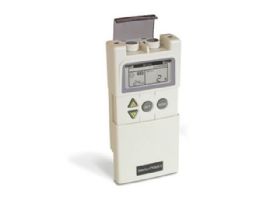
Electrotherapy
Category
When people experience a stroke, it can be mild or massive, with varying levels of physical involvement. For post-stroke patients who have paralysis on one side of the body or other topics that now affect movement and mobility, there are many supportive products to help with all the daily living activities we’re used to performing every day. As your stroke recovery progresses it’s important to remain safe while you keep active and engaged with your daily life. These daily living aids do just that!
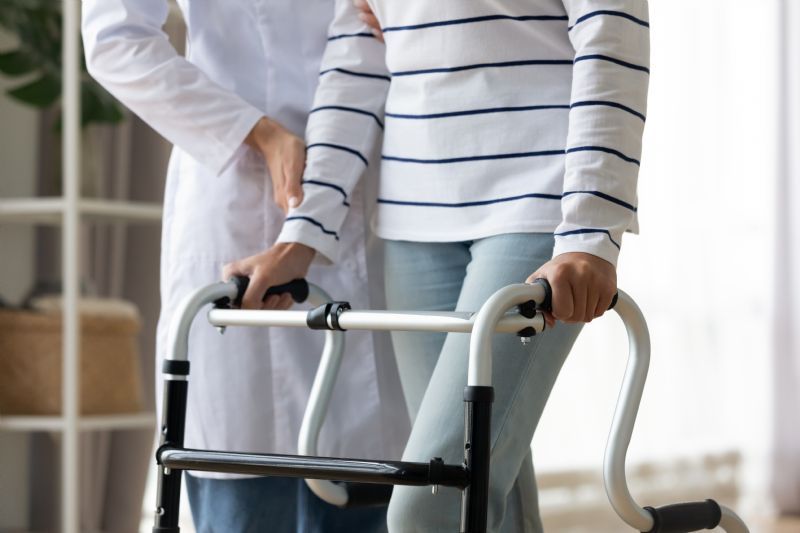
Even under the best of circumstances, the bathroom is the most dangerous room in the house because the majority of slips and falls occur there. Practicing bathroom safety and using specialized bathing devices are crucial for people recovering from a stroke. Grab bars are a must to provide a secure grip, as are safety mats inside and outside the tub or shower to reduce the risk of slipping.
Shower benches and shower chairs enable stroke recoverers to experience safer bathing, reducing the risk of falling.
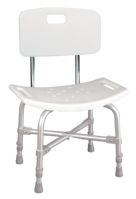
Bathing & Toileting Products
Department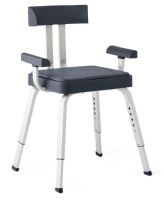
Shower Chairs
CategoryGrab Bars
Category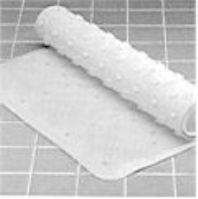
Bath Safety Mats
Category
Bending down and rising up from a standard toilet may be quite challenging for people recovering from a stroke, and creates an unsafe situation inherent with falling risks. Several different types of toileting aids can help, including raised toilet seats that add extra height, and toilet safety frames that surround the toilet to add support. Commodes, portable toilets that aren’t connected to plumbing, can be placed by the bedside and come in multiple configurations to provide a secure, supportive toileting experience that’s easier and closer to use.
Shower commode chairs combine the convenience of a commode seat, the functionality of a shower seat, and the transportation ease of a wheelchair all into one simplified device. Negating the need to purchase multiple pieces of assistive equipment, 3-in-1 shower commode chairs help those recovering from a stroke to regain independence and confidence while toileting and bathing.
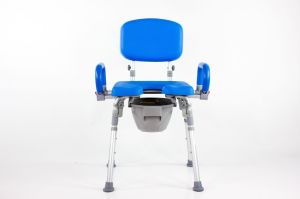
UltraCommode Shower Commode Chair by Platinum Health
View Product
Dressing aids comprise a wide variety of products all geared to support getting dressed or undressed independently. Post-stroke patients will often need these assistive devices as they recover, and before more functional manual dexterity gains are realized. Long-handled shoe horns, dressing sticks, sock-donning aids, and leg lifters are just some examples, along with devices that are specially designed for one-handed use, such as a one-handed button aid.
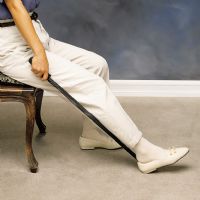
Good Grips Long Handle Shoe Horn
View Product
The Original AFO Assist | AFO Cradle - Made in the USA!
View Product
As we previously mentioned, insomnia is a common problem for stroke recoverers, as muscle spasms and tightness can make it hard to relax. It can also be quite challenging for people recovering from a stroke to mobilize to and from the bed, along with changing positions while in bed because of physical impairments caused by the stroke. An adjustable bed is remarkably beneficial, as it optimizes user safety and comfort for a better night’s sleep. If you do not need the entire bed system, products like the Easy Out Bed Hi-Lo Adjustable Bed Frame offer a frame only.
Bed wedges help with positioning and comfortable support, like these Avana Slant Bed Wedge Memory Foam Pillows. Assisting with reducing night-time disturbances like acid reflux, snoring, sinus pressure, and more, these moderate-density urethane foam mattress elevators come in a range of styles and sizes to suit personal needs.
Bed assist rails and bed mobility devices are also designed in a wide assortment of shapes and styles to provide users assistance getting in and out of bed and changing positions in bed, with some formats designed for sit-to-stand assistance from a sofa or chair. They give stroke recoverers strong and dependable support, enhancing safety. Halo Safety Wings and Halo Safety Rings are popular transfer bar options post-stroke because they offer a perfect handle that allows you to grab them in many ways. This is especially ideal for users who have lost some mobility in their hands. Learn more about other exceptional related products on Caregiver University: Homecare Hospital Beds And Mattresses.

Electric Adjustable Bed - Hi-Lo SL by Flex-A-Bed
View Product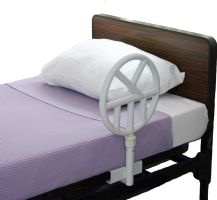
Halo Safety Rings for Beds by Halo Mobility Solutions
View Product
Assistive mobility devices like rollators, transport chairs, and specially designed wheelchairs can help people recovering from a stroke to move around their world more easily and safely, whether it’s used around the house or for traveling to visit friends or run errands. Rollators are lightweight and easy to push, providing great support for uncertain ambulation.
The Comodita Avanti is a sophisticated, patented, lightweight rolling walker designed for stroke patients. Its innovative design allows for effortless operation with one or two hands, ensuring utmost convenience and support. Instead of the traditional two handles, the Avanti has a long bar that can be pushed easily, and an easy-to-squeeze brake bar sitting right under it.
We offer plenty of guides on how to choose the best mobility device. Check out Caregiver University: Canes, Rollators, Scooters, and Walkers for more information.
The Stroke Recovery process can be difficult for anyone and oftentimes requires assistance from a healthcare professional. However, there are plenty of other places you can find support as well, like our Caregiver University platform, where you can find a bunch of helpful Stroke Recovery articles just like this one.
From transport chairs to orthoses to transfer benches, we’ve hand-selected a list of products we’ve found to be helpful on the path to recovery. These products do everything from easing tightness and spasms in the muscles to promoting proper posture and balance, targeting common symptoms, and alleviating the pain related to stroke rehabilitation. Our hope is that these products offer you some relief on your journey, and help pave the way to a restored quality of living.
Thanks for reading!

Benjamin K. Mattox, DrPH, PA-C
Orthopedic surgery physician assistant, doctor of public health, and owner of a public health consulting firm. With over a decade of Active Duty Navy Experience, Deployments with the Navy SEALS, and as a Professor for Purdue University - Dr. Mattox is a highly qualified and experienced clinician with a firm understanding of orthotic needs, rehabilitation, home access needs, gait therapy, and veteran-specific health needs.